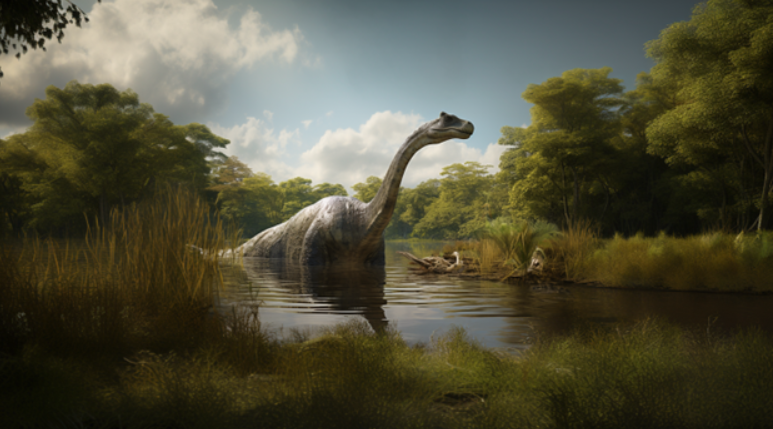Urban Legends-The Mokele-Mbembe
- Eloise Wechsler
- Jun 6
- 3 min read

A shark fin rising ominously out of the water. A giant, toothy mouth emerging from the depths. The mystery of what’s hiding in the deep has captivated humans since prehistory. We’ve explored just 5% of the ocean, and according to the US Defense Department only three people have ever reached the floor of the deepest part currently known– Challenger Deep. To put this into perspective, twelve people have been to the surface of the moon. It’s natural to make up wild stories and superstitions about the waters around us, with 71% of the world being covered in it.
Perhaps some of the most well-known are the Megalodon, a species of gigantic shark from the Pliocene Era which some believe to have not gone extinct, and the Loch Ness Monster, a serpentine creature rumoured to reside within the depths of Scotland’s Loch Ness. Thus, the ocean and waters around it are full of intrigue, mystery, and… fantastic creatures? Here is the fascinating tale of the Mokale-Mbembe, a lesser-known aquatic monster from Africa.
Mokele-Mbembe
Hailing from west equatorial Africa, the Mokele-Mbembe is a cryptid supposedly living in the Congo River. It is a mythical creature in Bantu mythology. The Bantu are a group of around 400 African tribes which share commonalities in their language and religion. One such similarity is the existence of a river creature called the Mokele-Mbembe, translated from Lingala as “one who stops the flow of rivers”. Due to differences in religions themselves, the Mokele-Mbembe have been described in different ways by different tribes. Often, it is seen with an elephant-like body and long neck, though some tribes see it as more analogous to a hippopotamus or elephant. In contemporary times, Mokele-Mbembe is most often described as a sauropod-like creature with a long neck and reptilian features.
This contemporary view is possibly due to the narrative spread by cryptozoologists– that is, people that make a job of searching for and cataloguing mythical creatures. In the 20th century, cryptozoologists such as Willy Ley gained interest in the idea of “living dinosaurs” and planned expeditions to Africa in order to search for them. In a book by cryptozoologist Roy P. Mackal, Mackal alleges that the first sightings of the Mokele-Mbembe wereey Christian missionaries. The theme of Christian missionaries continues throughout the narrative of the Mokele-Mbembe, as it is often used as evidence for the “Young Earth” narrative and disprove the existence of dinosaurs. Young Earth creationism is a belief held by some Christians, stating that the Earth is not billions of years old but rather less than 10,000 years old.
One of the difficulties in separating fact from fiction in the case of a creature such as the Mokele-Mbembe is the deeply held beliefs in the religion of which the creature belongs. Much of the mythos around the Mokele-Mbembe revolves around its spiritual status– some believe that it is not a physical creature, but rather a metaphysical being which protects rivers in the Congo or, in some cases, the deceased. The Mokele-Mbembe is treated differently in each tribe— some treat it as a sacred guardian, some as a ruthless killer, and yet all treat it with reverence. Thus, expeditions to “explain” such a creature as a dinosaur out of its rightful time period may be insensitive or reductionist to these culture’s religious beliefs. Additionally, the view of the Mokele-Mbembe has been shifted to fit the viewpoints of these missionaries. The mythological origins of the Mokele-Mbembe are nothing like the sauropodal creature seen in pop culture today in media like films and books. Though the intrigue around Mokele-Mbembe has been sensationalized beyond belief, it raises the question of whether it is disrespectful to these cultures to decontextualize their beliefs and treat them as another piece in a conspiracy theorist’s puzzle.
“Hitting Bottom: Submariner Explored Deepest Part of Ocean.” U.S. Department of Defense, 2025, www.defense.gov/News/Feature-Stories/story/Article/1737193/hitting-bottom-submariner-explored-deepest-part-of-ocean/. Accessed 21 Feb. 2025.
“Young Earth Creationism | National Center for Science Education.” Ncse.ngo, 2025, ncse.ngo/young-earth-creationism. Accessed 26 Feb. 2025.






Comments